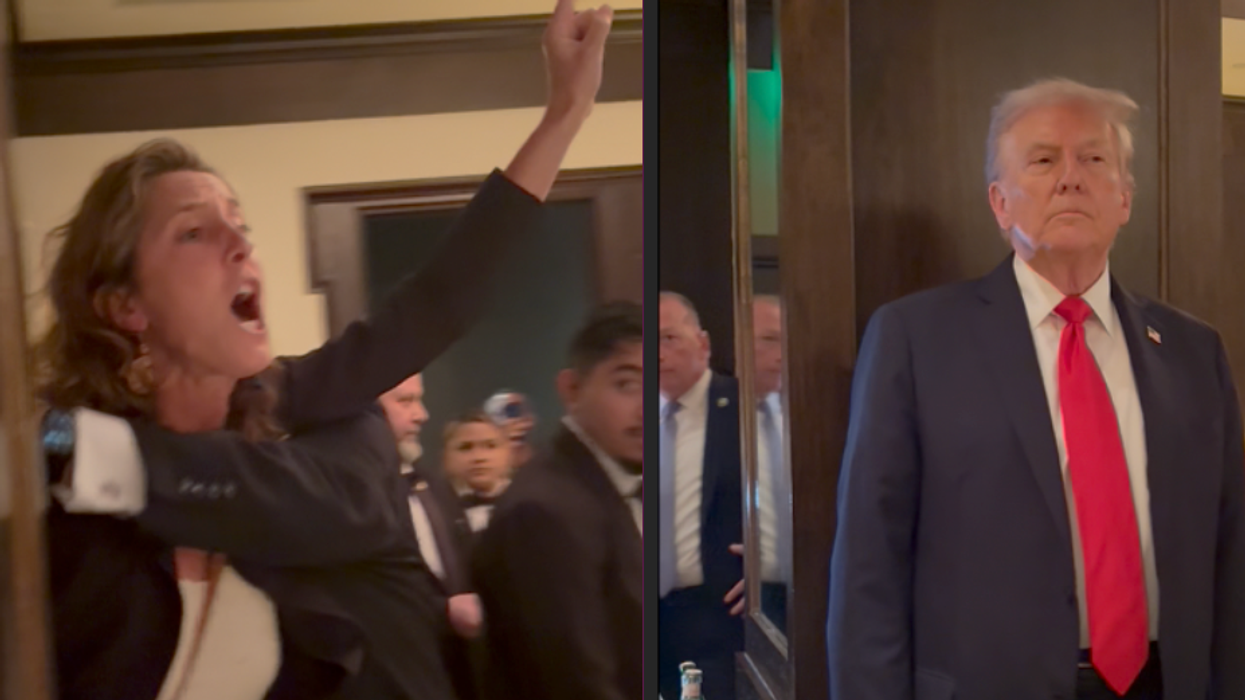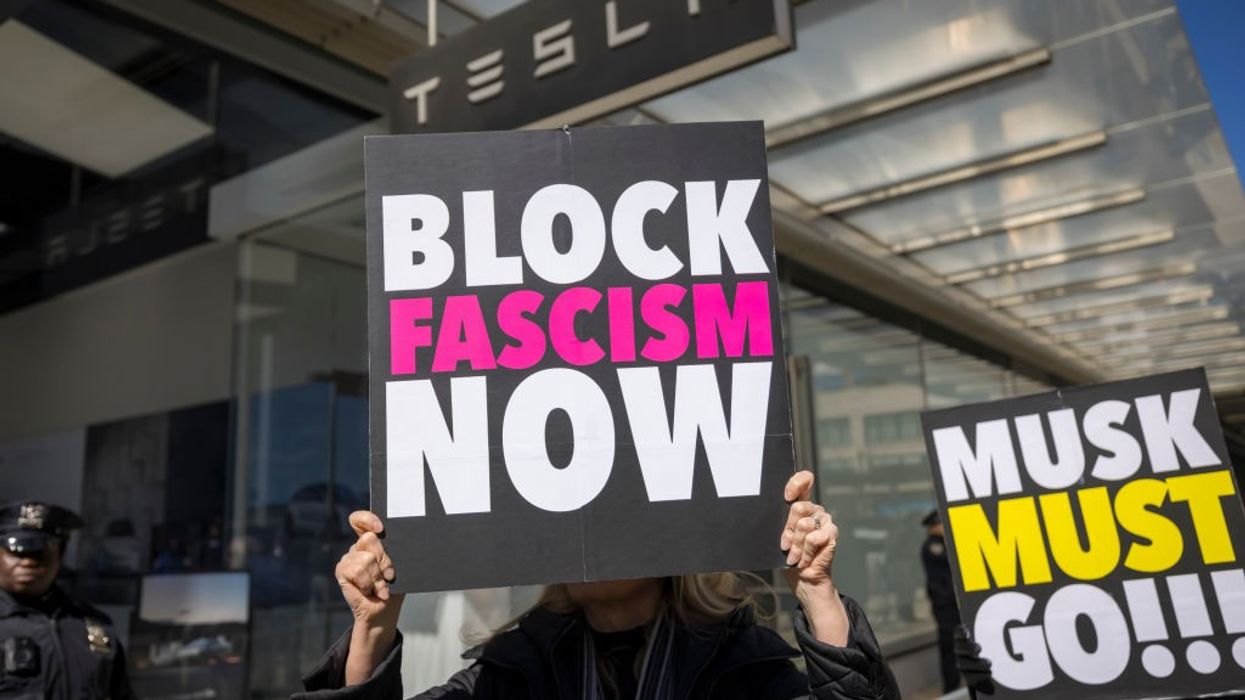'Disgusting': Racist, Homophobic, Antisemitic, and Violent Private Chats of GOP Leaders Exposed
"These are the people who pretend to be offended when called Nazis."
Is this who they are when not in view of public judgment or recrimination?
That is just one of the questions being widely asked after Politico on Tuesday revealed nearly seven months of grotesque private chats between members of Leaders of Young Republicans, the party's batch of up-and-comers, though already in positions of power within the faction's ranks.
From praising Adolf Hitler to casual use of racial slurs and calls for violence against their opponents, the Telegram chat logs obtained by Politico paint a picture of vile individuals who share a deep loyalty to President Donald Trump and reveled in sadistic contempt for their political enemies, hatred of minorities, and lust for power.
As Politico reports,
They referred to Black people as monkeys and “the watermelon people” and mused about putting their political opponents in gas chambers. They talked about raping their enemies and driving them to suicide and lauded Republicans who they believed support slavery.
William Hendrix, the Kansas Young Republicans’ vice chair, used the words “n--ga” and “n--guh,” variations of a racial slur, more than a dozen times in the chat. Bobby Walker, the vice chair of the New York State Young Republicans at the time, referred to rape as “epic.” Peter Giunta, who at the time was chair of the same organization, wrote in a message sent in June that “everyone that votes no is going to the gas chamber.”
Reaction to the leaked private messages was swift and full of contempt, if not shock.
"Welcome to Trump’s Republican Party," said Rep. Pramila Jayapal (D-Wash.) in response to the reporting. "Disgusting."
" Racism, rape, homophobia, antisemitism … Are we greater yet?" asked Maya Wiley, president and CEO of the Leadership Conference on Civil Rights. "Feel safer?"
According to Politico, "the messages reveal a culture where racist, antisemitic and violent rhetoric circulate freely—and where the Trump-era loosening of political norms has made such talk feel less taboo among those positioning themselves as the party’s next leaders."
The members themselves seemed to recognize that if their free-flowing conversations were ever revealed to the public, it would be bad. "If we ever had a leak of this chat, we would be cooked," said one member inside one of the chat threads. But as Politico noted, "they kept typing anyway."
Melanie D'Arrigo, executive director of the Campaign for New York Health, an advocacy group, said, "These are the people who pretend to be offended when called Nazis. Where’s the GOP leadership outrage?"
Congresswoman Elise Stefanik (R-N.Y.) came under fire in the wake of Politico's reporting, given her vocal support for the New York members of the group, many of whom were identified and named in the reporting. Just this summer, Stefanik called them the "backbone" of the Republican Party and key to its future.
Some of Stefanik's top young allies in the party, noted Addison Dick, a member of the New York Democrats' communication team, "praised Hitler, called to put opponents in gas chambers, and repeatedly used racist and antisemitic hate speech in leaked chats." Dick was among those chiding Stefanik for characterizing the reporting as a "hit piece" as opposed to more harshly condemning the vile behavior it exposed among her party's core of young leaders.
For his part, Vice President JD Vance said he would not join in the "pearl clutching" over the leaked chat logs and refused to condemn the myriad examples of racist, sexist, antisemitic, and calls to violence by the group of party officials.
New York Gov. Katherine Hochul, a Democrat, was asked about the revelations during a Tuesday afternoon press conference, and whether it was a case of a few "bad apples" or a "deeper toxicity" within the entire Republican Party.
Q: Politico reported on a group chat of young Republicans. Does this just reflect some bad apples?
HOCHUL: Some bad apples? These are the future of the Republican Party. This is so vile it's hard to find the words to put into context that these are people who are part of one of… pic.twitter.com/aDjnmcQTaJ
— Aaron Rupar (@atrupar) October 14, 2025
"Some bad apples? These are the future of the Republican Party," Hochul responded. "This was so vile it's hard to find the words to put into context that these are people who are part of one of the two major political parties, and they believe in gas chambers, rape, and discrimination based on the color of people's skin. These are racist, sexist, disgusting remarks."
"And I would say this," Hochul continued, also calling out Stefanik as the highest-ranking elected GOP official in the state for her history of inflammatory and bigoted comments, most notably against New York City mayoral candidate Zohran Mamdani, a Muslim, whom Stefanik has called a "jihadist" and "terrorist."
Stefanik, said the governor, should do a bit of self-reflection and "reexamination" of her own "inflammatory words" and of her broader role in influencing these young members and "normalizing" such thinking and rhetoric. As for the members exposed in the chats, Hochul said "there's gotta be consequences" for their behavior and that everyone in the party, from Trump on down, should condemn it.
"Kick them out of the party. Take away their official roles. Stop using them as campaign advisers," she advised. "This bullshit has to stop."


